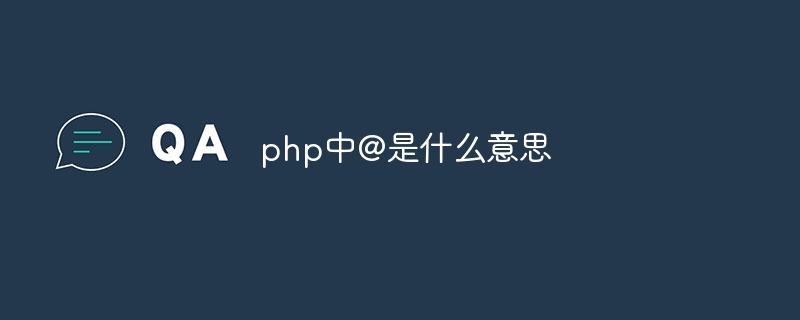
The @ operator in PHP is used to suppress error reporting. It suppresses error and warning messages for the expression that follows it. It sends error and warning messages to the server log. Commonly used for debugging, error handling and output control. Fatal errors cannot be suppressed, and overuse may mask problems. It is recommended to use appropriate error handling mechanisms in production environments instead of relying on the @ operator.

@ Operator in PHP
@ operator is used in PHP to suppress error reporting. It suppresses error and warning messages for the expression that follows it.
How it works
When the @ operator is applied to an expression, it executes the expression but does not print the resulting error or warning message. Instead, it sends the message to the server log.
Syntax
<code class="php">@$variable; @$function();</code>
Example
<code class="php">@file_get_contents('non-existent-file.txt'); // 抑制文件未找到错误
@$result = 10 / 0; // 抑制除以零错误</code>Use case
@ Operator Typically used in the following situations:
Note
The above is the detailed content of What does @ mean in php. For more information, please follow other related articles on the PHP Chinese website!
 Spot trading software
Spot trading software
 The most prominent features of computer networks
The most prominent features of computer networks
 What are the differences between c++ and c language
What are the differences between c++ and c language
 Python re module usage
Python re module usage
 Linux batch modification file name suffix
Linux batch modification file name suffix
 Complete collection of SQL query statements
Complete collection of SQL query statements
 Mechanical energy conservation law formula
Mechanical energy conservation law formula
 How to solve the problem of forgetting the power-on password of Windows 8 computer
How to solve the problem of forgetting the power-on password of Windows 8 computer




